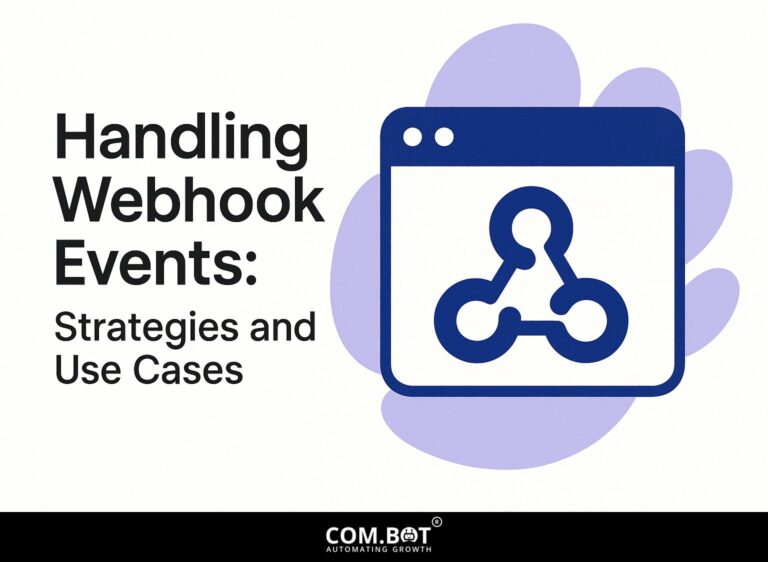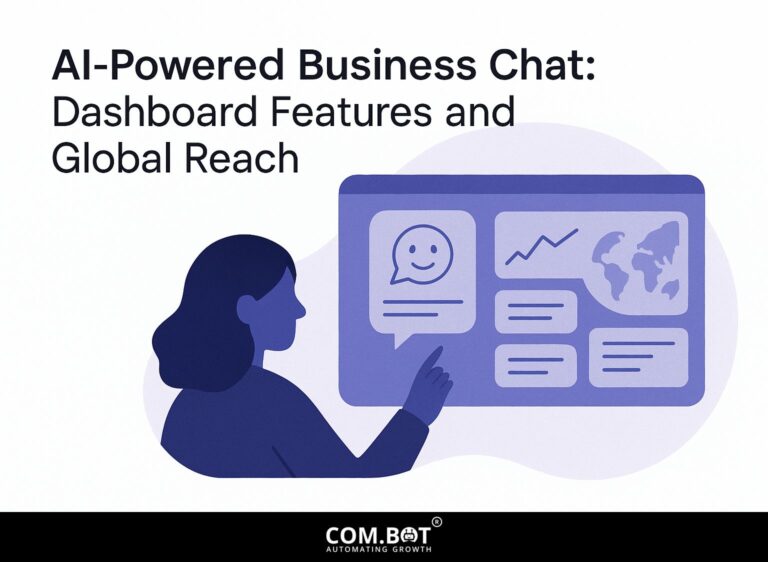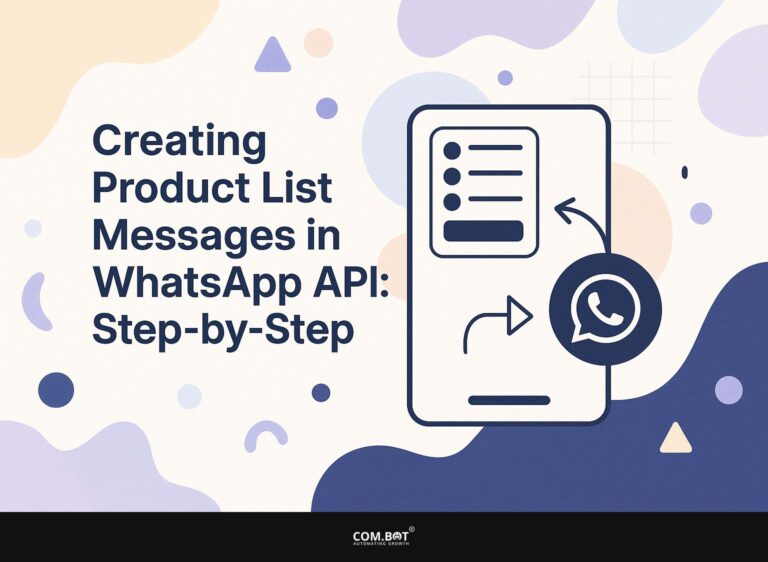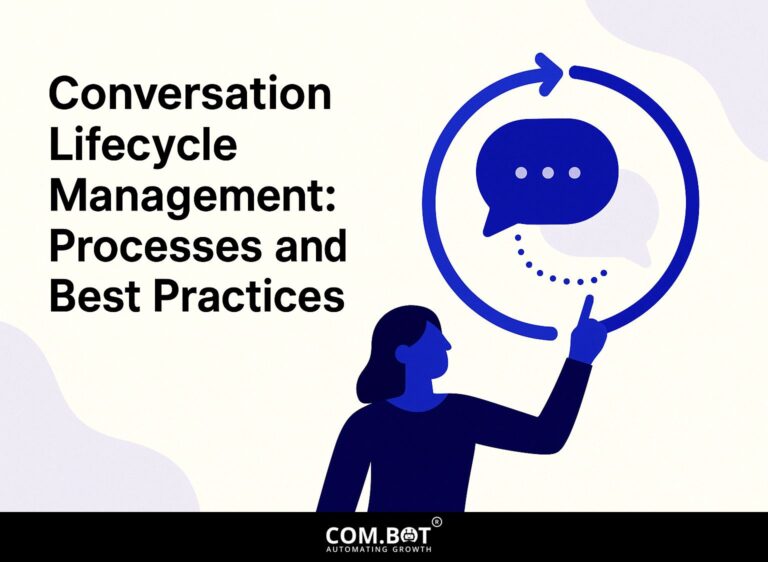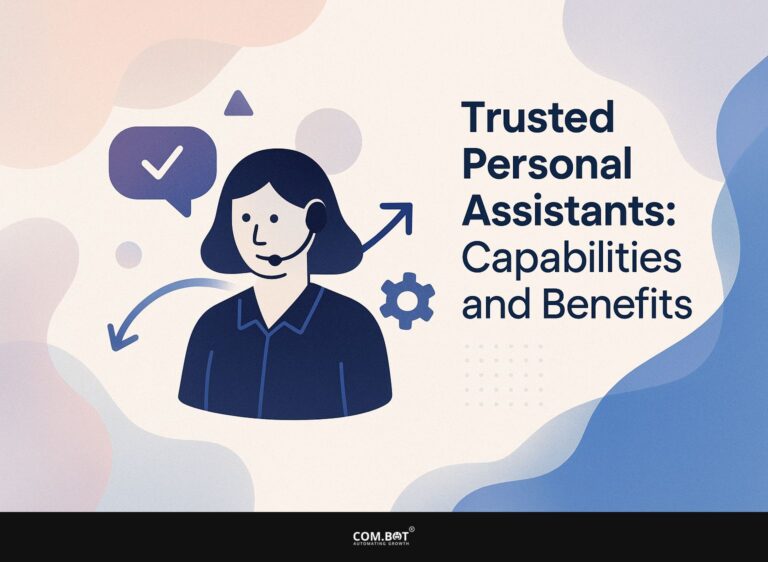Feedback Collection with AI Bots: Methods and Advantages
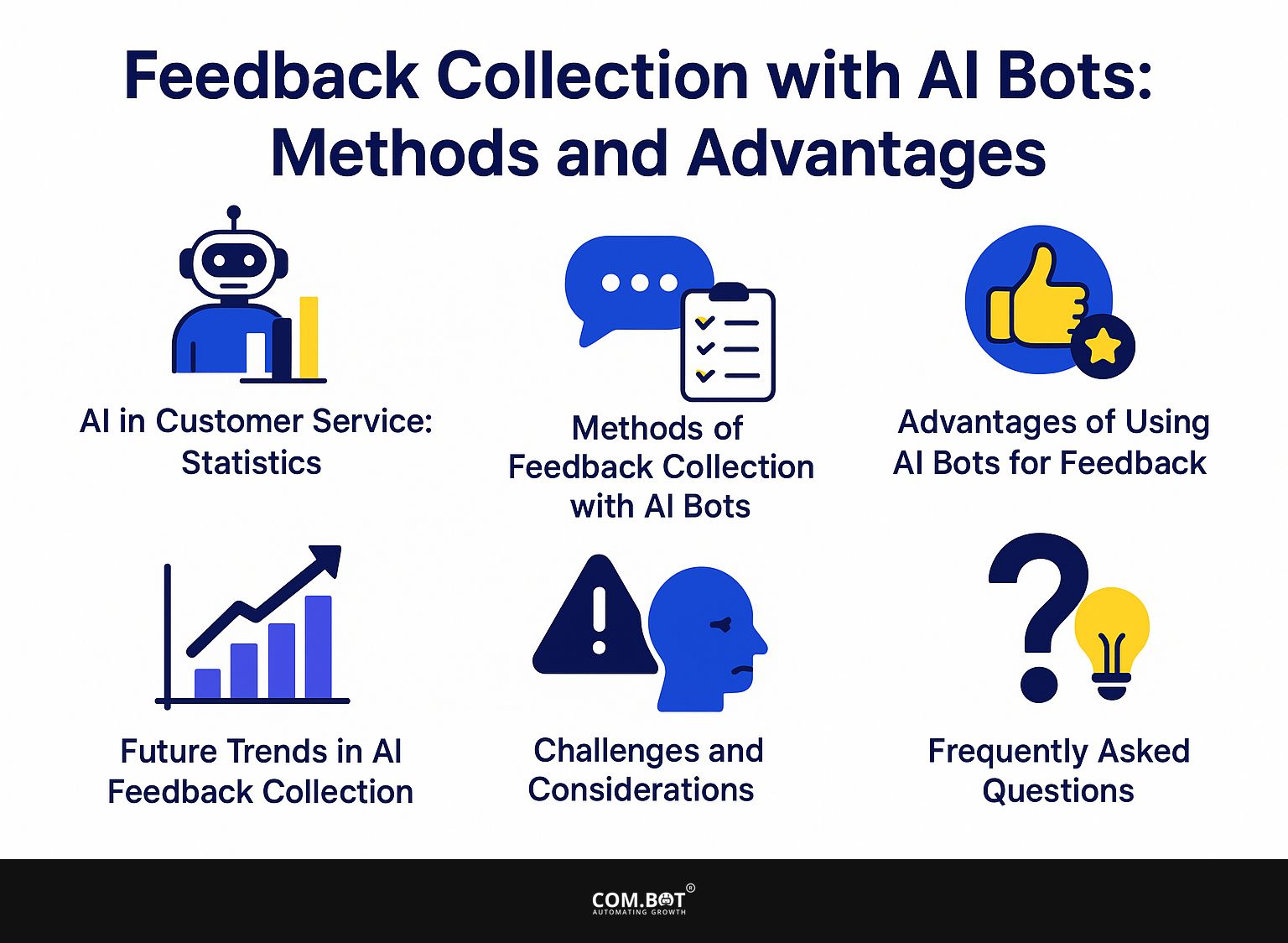
Collecting useful feedback is important for improving customer experience in the current rapid market. AI chatbots are effective tools that change the way companies collect customer feedback instantly.
This article looks at new ways to use chatbots for gathering feedback, showing the benefits they offer to both businesses and clients. Find out how these intelligent tools can increase response rates and provide helpful data to help your business grow.
Key Takeaways:
- Real-time feedback with chatbots allows for quick and efficient data collection, increasing response rates.
- Email surveys using AI offer customized and personal feedback requests, improving how happy customers are.
- Using AI bots for social media tracking helps businesses collect feedback from more people and learn important information for making improvements.
- 1 AI in Customer Service: 2024 Statistics
- 2 Methods of Feedback Collection with AI Bots
- 3 Advantages of Using AI Bots for Feedback
- 4 Challenges and Considerations
- 5 Future Trends in AI Feedback Collection
- 6 Frequently Asked Questions
- 6.1 1. What is feedback collection with AI bots and what are its methods?
- 6.2 2. How do chatbots collect feedback?
- 6.3 3. What is sentiment analysis and how does it aid in feedback collection with AI bots?
- 6.4 4. How does natural language processing (NLP) contribute to feedback collection with AI bots?
- 6.5 5. What are the advantages of using AI bots for feedback collection?
- 6.6 6. Can AI bots be used for feedback collection in any industry?
1. Importance of Feedback in Business
Customer feedback influences business choices, with 60% of shoppers ready to share their opinions when asked properly. Getting feedback is important for making products and services better.
For example, businesses can use tools like SurveyMonkey or Google Forms to collect feedback directly from customers. Utilizing Net Promoter Score (NPS) surveys can gauge customer loyalty and satisfaction, leading to actionable changes.
According to a study, companies that focus on gathering and acting on feedback can achieve up to a 25% increase in customer retention rates. Communicating with customers after they buy through follow-up emails improves their experience and strengthens connections.
For an extensive analysis of this trend, our deep dive into Com.bot CSAT Automation explores how automated customer satisfaction tools can further enhance these interactions.
2. Role of AI in Modern Feedback Systems
AI-powered systems can analyze customer sentiments in real-time, increasing the speed of feedback processing by up to 50%. Tools like Trustmary use AI to collect feedback from various platforms, helping businesses respond faster and more effectively.
For instance, Trustmary can connect with email campaigns to send automatic follow-ups after a purchase. Similarly, Zendesk uses machine learning to organize and prioritize customer questions, ensuring that important issues are addressed promptly.
By using these tools, companies can significantly speed up their response times while learning important details about customer satisfaction and behavior.
AI in Customer Service: 2024 Statistics
AI in Customer Service: 2024 Statistics
AI and Chatbot Usage in Customer Service: Market and Technology Adoption
AI and Chatbot Usage in Customer Service: Customer Interaction and Expectations
AI and Chatbot Usage in Customer Service: Benefits and Challenges of AI Adoption
The AI in Customer Service: 2024 Statistics gives a thorough look at how AI and chatbots are used in customer service, focusing on their use in the market, how they interact with customers, and the benefits and difficulties of using AI.
AI and Chatbot Usage in Customer Service indicates significant adoption rates. 74% of businesses utilize chatbots for customer interactions, showcasing their growing importance in providing instant responses. However, only 29% of businesses use conversational AI, suggesting that while basic chatbot technology is widely adopted, more advanced AI solutions are less prevalent. Interestingly, 89% of contact centers use AI-powered chatbots highlighting the technology’s ability to manage large numbers of customer questions quickly and effectively. The market for call center AI is anticipated to grow by 111.77% by 2026, reflecting its expanding influence and potential for improving customer service operations.
Customer Interaction and Expectations show important information about how consumers act and feel satisfied A significant 73% of customers switch businesses after bad experiences, indicating the critical need for effective customer service. Despite the high adoption of chatbots, 90% of customers still prefer human agents, showing a strong preference for human interaction. Nevertheless, 80% of consumers report satisfaction with chatbot interactions, highlighting that when implemented correctly, chatbots can meet customer needs effectively.
Benefits and Challenges of AI Adoption showcase both the positive impacts and obstacles faced by businesses. 50% of support teams report benefits from AI such as increased efficiency and faster response times. However, 77% cite data quality as a significant obstacle This shows how important accurate data is for AI to work well. Additionally, 78% believe human agents are irreplaceable AI can improve customer service, but it cannot completely replace the personal touch needed for difficult and customized interactions.
In summary, the AI in Customer Service: 2024 Statistics report highlights the growing role of AI in customer service, the ongoing preference for human agents, and the dual nature of AI benefits and challenges. As companies keep using and refining AI technologies, it will be important to balance how machines work with human understanding to achieve effective customer service plans.
Methods of Feedback Collection with AI Bots
AI bots provide different ways to gather feedback, improve customer interaction, and make the process easier.
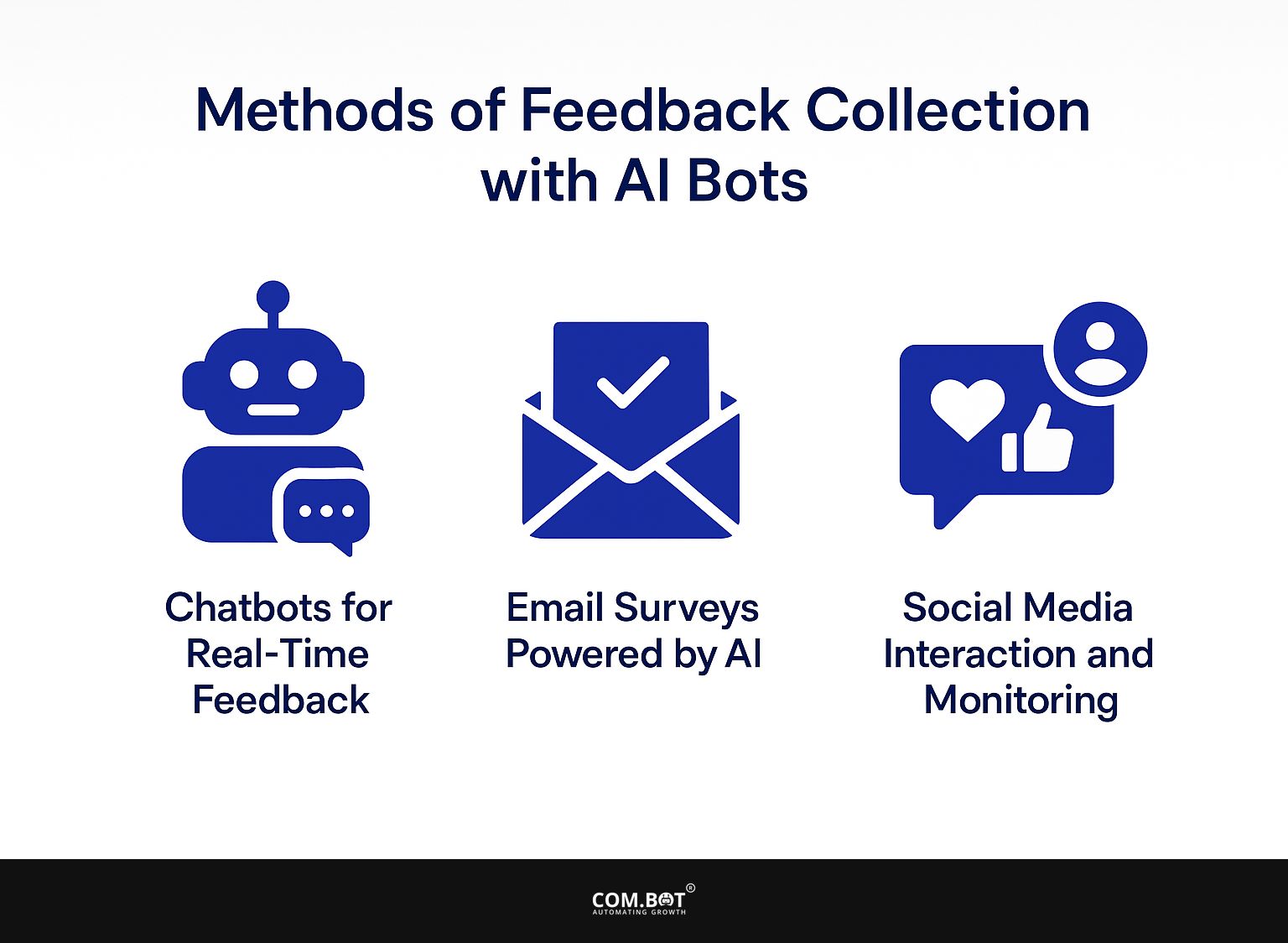
1. Chatbots for Real-Time Feedback
Chatbots can increase response rates by 40% when used to collect immediate feedback during customer interactions. Platforms like Vonage and SurveyMonkey easily connect with chatbot technology, helping businesses collect feedback immediately after conversations.
For example, a Vonage chatbot can send a quick survey to users after a call, while SurveyMonkey provides templates that chatbots can send through messaging apps.
To implement this effectively, start by defining key questions that align with your goals, ensuring they are concise and specific. This method increases participation and helps quickly identify areas for improvement, improving the experience for customers.
2. Email Surveys Powered by AI
AI-driven email surveys can achieve response rates of up to 30%, significantly above the industry average of 10%. To make the most of their effectiveness, tools like Google Forms and SurveyMonkey provide adjustable choices that increase participation.
Google Forms lets you use different question types, such as multiple-choice and open-ended questions, to customize surveys for your audience.
SurveyMonkey improves user experience with its collection of templates and analytics dashboard, allowing you to easily monitor response patterns. By using these tools, you can make surveys that connect with your audience, improving both feedback quality and response rates.
3. Social Media Interaction and Monitoring
Monitoring social media platforms allows businesses to gather feedback from over 3.6 billion active users worldwide. To make the most of this opportunity, businesses can use tools like Hootsuite and Sprout Social.
Hootsuite supports scheduled posts and stream monitoring, allowing for real-time responses to customer inquiries. Sprout Social is great at analyzing customer feelings, offering information on how people feel about your brand.
Businesses should make a schedule for posting content, setting aside time each week to check and reply to comments. This structured method encourages involvement and improves the brand’s overall image.
Advantages of Using AI Bots for Feedback
Using AI bots to gather feedback can improve customer experience, leading to a 30% rise in customer satisfaction scores, a significant benefit of incorporating these bots into customer support strategies.
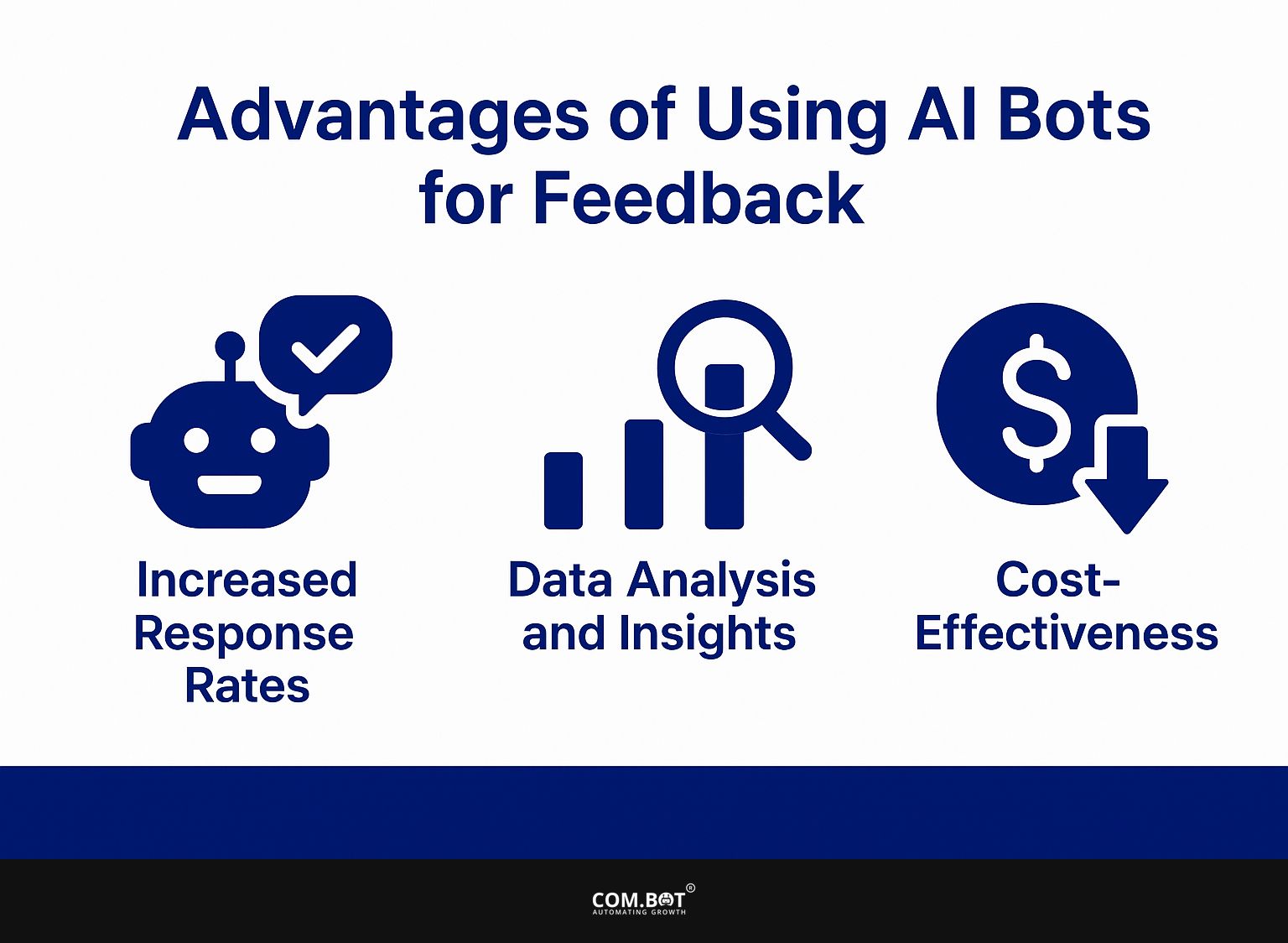
1. Increased Response Rates
Businesses that integrate AI chatbots report up to a 55% increase in feedback response rates compared to traditional methods. To make use of this, companies like Sephora use AI to talk to customers after they buy, asking for reviews within minutes.
Similarly, Hootsuite employs chatbots to engage users in real-time, asking for feedback during their experience. Using these methods may require adjusting your chatbot’s script to add specific questions for users or using tools like Drift or Intercom, which give user data to improve interaction.
By asking specific questions at important times in the customer process, you can greatly improve how you collect feedback.
2. Data Analysis and Insights
AI can review feedback data 80% quicker than doing it by hand, giving useful information right away. This speed improves your ability to make decisions based on data quickly.
For example, tools like Google Analytics and Tableau allow businesses to track customer sentiment and feedback metrics seamlessly.
Google Analytics helps you monitor user interactions, while Tableau visualizes data trends, enabling quick identification of areas needing improvement. By using these tools, organizations can better meet customer needs by changing products and services based on exact, current information.
3. Cost-Effectiveness
Using AI to gather feedback can cut operational expenses by up to 25% and make better use of resources. Traditional feedback methods, such as surveys or focus groups, can be costly and time-consuming, often requiring significant manual input and analysis.
For instance, a group could take several days to gather and study data from a manual survey, potentially spending over $2,000 for each project. In contrast, AI-driven tools like Qualtrics or Typeform handle these processes automatically, offering real-time analytics for less than $500 per year.
As time goes on, these AI tools reduce costs and speed up decision-making, allowing organizations to react more quickly.
Challenges and Considerations
AI provides many benefits, but businesses face various challenges in collecting feedback successfully.
1. Data Privacy and Security
More than 70% of customers worry about data privacy, so businesses need to have strong security measures. To protect customer information, businesses should adopt GDPR guidelines, which mandate secure data handling and user consent.
Encryption methods, such as AES (Advanced Encryption Standard), effectively safeguard sensitive data both in transit and at rest. Implementing tools like OneLogin for identity management can reduce unauthorized access to customer data.
Regular checks and staff training on data privacy are necessary to meet legal standards and gain customer confidence. These proactive steps reduce risk and improve your brand’s reputation.
2. Ensuring Quality Interactions
It’s important to have good interactions with AI because half of the customers are unhappy with bad automated responses.
To maintain excellent AI interactions, concentrate on three key practices.
- First, design your chatbot with clear, concise language that mirrors your brand voice. Programs like Dialogflow and Microsoft Bot Framework make conversations easier.
- Second, implement a feedback loop. Regularly audit conversations to identify pain points and update responses accordingly. Continuously train the AI using new data and interactions. Platforms like Rasa support gradual learning, letting your chatbot change and get better as it interacts, which increases customer satisfaction.
Future Trends in AI Feedback Collection
AI feedback collection will increasingly work smoothly with new technologies, improving how users interact with it. This evolution is echoed in the realm of customer service, where the use of AI bots is transforming user satisfaction and engagement. For instance, AI bots are revolutionizing customer support by offering benefits such as faster response times and increased satisfaction ( AI Bots for Customer Support: Benefits and Satisfaction).
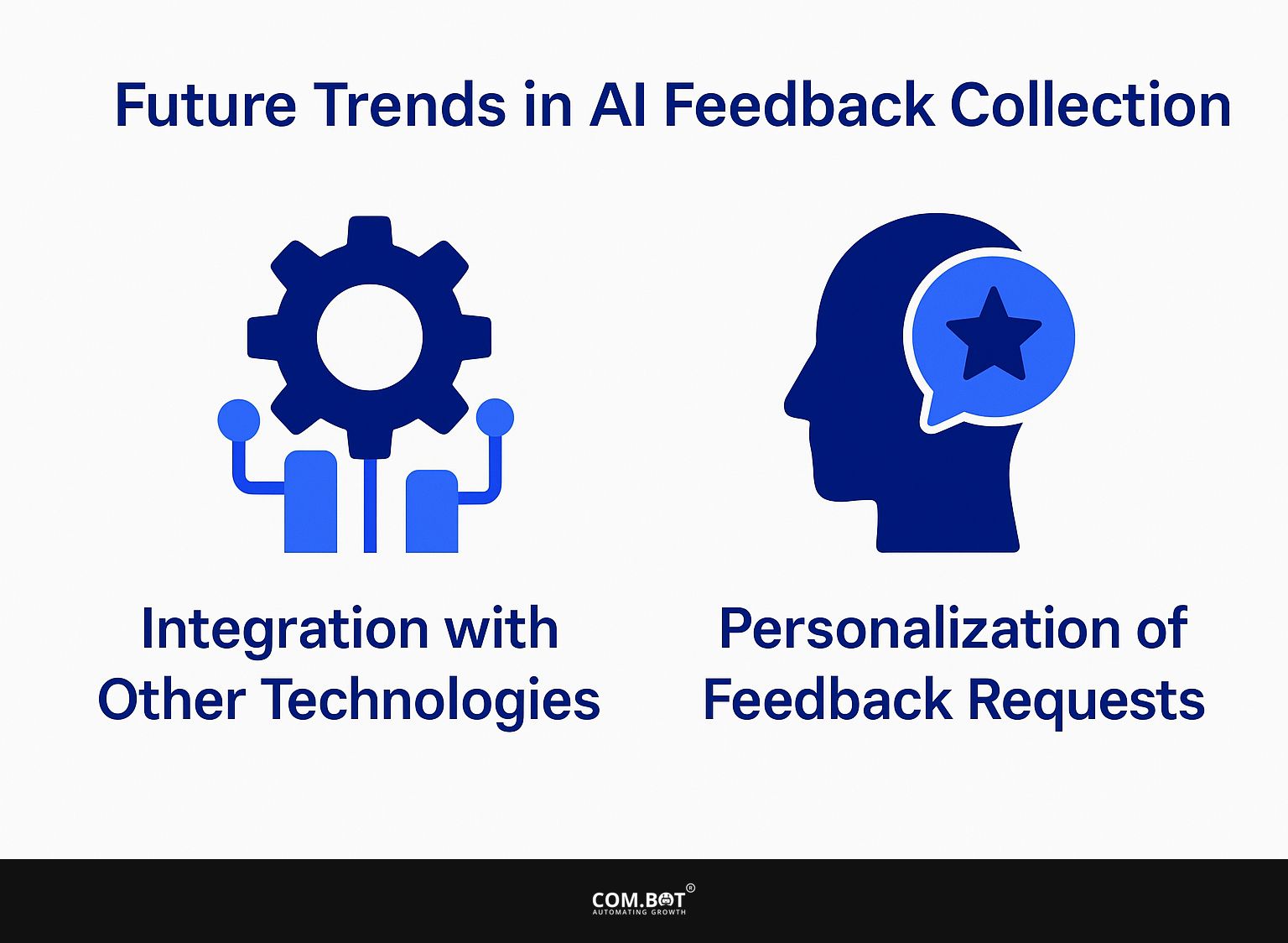
1. Integration with Other Technologies
Integrating AI feedback systems with cloud technology can facilitate real-time data sharing among teams, improving responsiveness.
Teams can make customer interactions more efficient by linking AI tools like TensorFlow or IBM Watson with CRM platforms such as Salesforce.
For instance, employing a tool like Zapier enables automation of feedback collection via surveys, automatically updating CRM records. This integration lets companies immediately examine trends and customer feelings, improving their decisions.
These systems are compatible with cloud storage options such as Google Drive, allowing feedback data to be stored and retrieved easily, so those involved always have the newest information available.
2. Personalization of Feedback Requests
Customizing feedback requests can increase response rates by 30%, proving that personal communication is important. To create impactful questions, begin by segmenting your customer base.
For instance, if you have both new and long-time customers, ask specific questions that match their experiences. For new users, inquire about their onboarding experience-“What features did you find most confusing?” For long-term customers, focus on retention-“How has our service evolved to meet your changing needs?”
Use tools like Typeform for surveys you can customize. You can create logical paths that guide people based on their answers, making the questions more meaningful and boosting engagement.
Frequently Asked Questions
1. What is feedback collection with AI bots and what are its methods?
Feedback collection with AI bots is the process of using artificial intelligence (AI) technology to gather and analyze feedback from individuals. The most common methods used are chatbots, sentiment analysis, and natural language processing (NLP).
2. How do chatbots collect feedback?
Chatbots are computer programs that simulate human conversation through messaging applications. They use pre-determined scripts or AI algorithms to engage with users and collect feedback through conversation. This approach provides a way to collect feedback that is customized and effective.
3. What is sentiment analysis and how does it aid in feedback collection with AI bots?
Sentiment analysis is the process of identifying and extracting opinions and emotions from text. AI can use sentiment analysis to examine feedback from chatbots and give a summary of how people feel about a product, service, or company.
4. How does natural language processing (NLP) contribute to feedback collection with AI bots?
Natural language processing (NLP) is a branch of AI that enables machines to understand and interpret human language. This technology is used in chatbots to analyze user feedback and provide accurate information about their emotions and comments.
5. What are the advantages of using AI bots for feedback collection?
One of the main benefits of using AI bots for gathering feedback is they can collect and study data instantly, offering quick information. They provide a customized and easy method to collect feedback, resulting in better response rates and more precise information.
6. Can AI bots be used for feedback collection in any industry?
Yes, AI bots can be used for feedback collection in any industry. They can be adjusted to meet the unique needs of a company and the people they want to reach, making them a useful tool for collecting feedback and information. Some industries that have successfully implemented AI bots for feedback collection include customer service, healthcare, and e-commerce.
